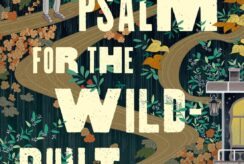By Jay Flood

Before I read this book, I didn’t realize it was possible to be so confused and still love a book so much. I genuinely don’t think I ever knew what was happening, but I knew it was the most beautiful, captivating book I have ever read. If someone used Emily Dickinson’s poems to create a story about love, fear, and courage, it would be This is How You Lose the Time War by Amal El-Mohtar and Max Gladstone.
A dying world is caught in a time war in which two factions fight to rewrite history. Red and Blue are time-traveling agents from rival factions and are each other’s greatest competitor. With the motivation to taunt the other, Red and Blue begin to leave letters for each other to find and destroy. But as time goes on, companionship becomes their motivation and letters meant to taunt become letters meant to communicate love. Correspondence with the other side is forbidden and the consequences for each woman are deadly. Just like in Romeo and Juliet, the danger and suspense in chasing forbidden love makes the read even more thrilling and appealing.
Just over 200 pages long, This is How You Lose the Time War captures your attention from the very first page and keeps you intrigued until the very end. With a 3.95 star average rating, more than 50,000 people rated this book five stars and I rated it four. I think the style of the book is what makes it so unique and captivating. The poetic style of the prose is so beautiful and articulate, but not straightforward at all. The confusing nature of this book creates frustration and an intense need to ingest the words as quickly as possible. The confusion is intentional and adds value, as well as meaning. Although it’s a fast read, it is not a light read. It requires your undivided attention and a detail-oriented focus. In the same breath, keeping the bigger picture in mind helps piece everything together.
In order to fully enjoy this novel, you have to be okay with not having any character backstories or complete and detailed information about the world and how it works. I am someone who loves to know exactly what is going on, all the details of how the world works, and everything about the characters and their lives. But in this book, not knowing is the point. Not understanding some of the metaphors and analogies is the point. Sometimes details distract from the theme and message the author wants to convey. So in this case, readers need to be content with knowing they won’t know or understand everything, but that the reading experience is so much better for it.
For having read a book filled with so many beautifully written metaphors, analogies, and word portraits, you would think I would be able to accurately and effortlessly describe the experience of reading this book. Yet, it is somehow still so difficult to put into words the experience and journey I went through. Sometimes, when recommending a book, it’s better to say nothing at all than say too much. I truly and wholeheartedly believe this is a book everyone should experience without any preconceived notions or outside opinions and biases. Going into this book with no prior knowledge created a beautiful, ethereal experience that has yet to be topped.
